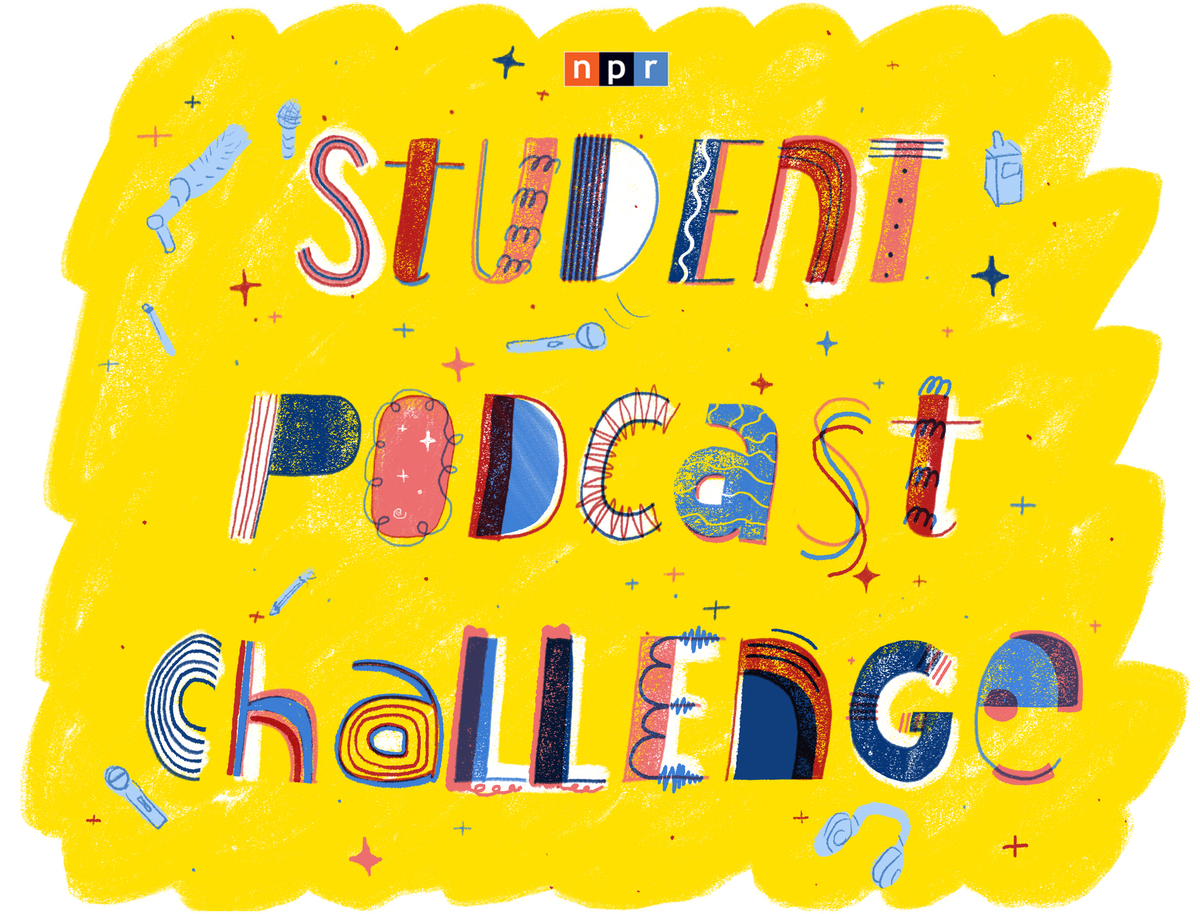Illustration by NPR
PARTICIPATE:
HOW TO CONVINCE STUDENTS TO VOTE
Only 50% of eligible voters between the ages of 18 and 29 turned out to vote in the 2016 presidential election 😮. Yup, we were surprised by that number, too. Here’s another jaw-dropping statistic: Did you know that young people of color vote at about two-thirds the rate of their white counterparts? More often than not, young people who aren’t participating voters come from underserved, low-income, and immigrant communities. How can we better prepare them for such a fundamental form of civic participation? A new report from Generation Citizen has answers. They broke it down into 4 Civic Building Blocks designed to empower young people to vote: (1) Civic Knowledge (2) Civic Skills (3) Civic Values/Disposition (4) Civic Participation. Read the full report to see how you can apply each in your classroom.
CHALLENGE:
THERE ARE NO LIMITS; THE WORLD IS YOUR OYSTER
Baltimore is a city that’s struggled with poverty, crime, and a high unemployment rate for far too long. But there’s one high school that’s making headlines for challenging that trend—Green Street Academy. In fact, 95% of seniors move on to college or straight into their careers right after graduating. What’s their secret? The school’s executive director, Crystal Harden-Lindsey says that by not limiting students to “this or that” choice, it opens up a world of possibilities. They make sure students understand that while college is important, it’s not the only pathway to success. Part of the school’s curriculum places students with paid internships in fields students have never considered or at small businesses in the surrounding community. Harden-Lindsey says it’s their way of telling students they can do it all, “You can make money. You can also give back to your community. You can also go to college.”
ENTER:
UP FOR NPR’S STUDENT PODCAST CHALLENGE?
Are any of the students in your classes working on a podcast? Great! They’re the perfect candidates for NPR’s Student Podcast Challenge. The contest isn’t just for high school students, either. Students from 5th to 12th grade are all eligible. But they can only qualify if a teacher enters the contest for them. Episodes should be between 3 and 12 minutes long. This is the second year NPR is doing this challenge. Not to toot our own horn, but XQ school, Elizabethton High School, won last year’s contest. Elizabethton’s award-winning pod told the bizarre true story of an elephant hanging that took place over a century ago (yes, you read that right). So many questions. But, you’ll need to tune in to the award-winning podcast to find out the rest. Winners get a feature on one of NPR’s most popular podcasts—Morning Edition or All Things Considered.
BREATHE:
AVOID TEACHER BURNOUT BY TREATING YO’SELF
Why is it that ~30% of teachers leave the profession within the first 5 years in the field? We often talk about how we can help students succeed. But did you know that one of the most crucial ways you can do that is by taking care of yourself? Because let’s be honest; being a teacher is a tough job—it’s one of the most difficult yet rewarding career paths. Students pick up on things. That means they’re picking up on your burnout, too. Do you want them to follow the same path? Our guess is no. Thankfully, one of our favorite podcasts did an episode on this exact subject. 10 Minute Teacher Podcast touches on all things that matter most to classroom teachers. Make sure to check it out. But, we suggest starting with episode 579, Self Care Tips and Advice to Be Your Best. Because frankly, you deserve it. One of our favorite tips from the episode: Reset and shift your mindset by taking a deep breath every once in a while.
TALK:
THE INTERSECT OF CULTURE AND LEARNING
Shoutout to @SXSWEDU for resurfacing this 2017 keynote speech from Dr. Christopher Emdin over a recent tweet. Emdin captivated the audience by “spitting truths” with a flow and cadence similar to a slam poetry reading. He spoke about how the current education space extracts culture from learning by excluding specific communities through systemic and structural inequities. In his talk, he called out three types of education people: enemies, friends, and frenemies. Enemies are those who look to profit off education. Friends are those who genuinely believe education is the civil rights issue of our time. Frenemies are those who believe in underserved students while still having low expectations of them. Which one are you? We want to leave you with this actionable tip from Emdin: Start having open conversations in your classroom about the cultural struggles students face every day; they might give you—and your students—perspective you didn’t have before.
XQ X-TRA
Extend your reach; write a guest blog
We’re all working toward the same goal: to help students succeed by preparing them for the life ahead. What are some of the hurdles you encountered along the way? How did you overcome them?
Telling your story might help another educator, school, or community thousands of miles away.
TAGS:



 Tweet
Tweet 



